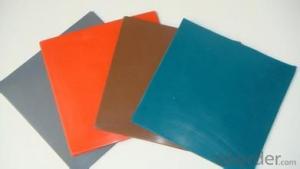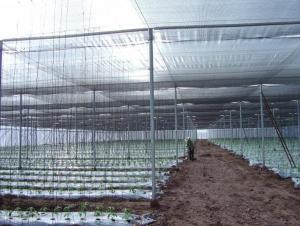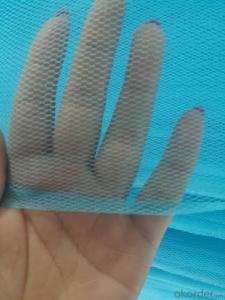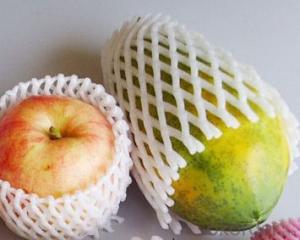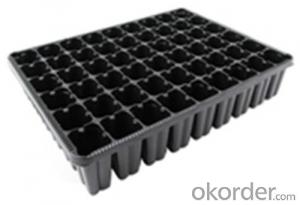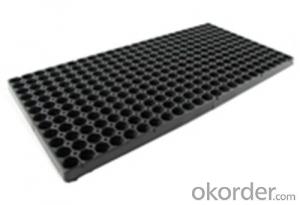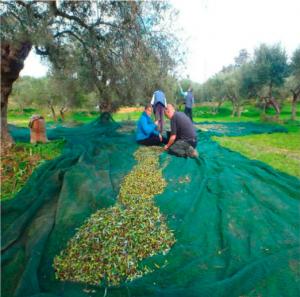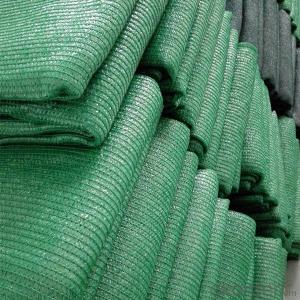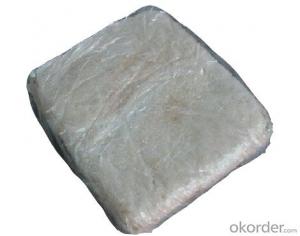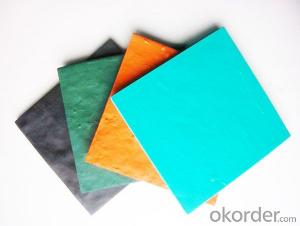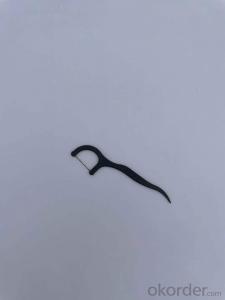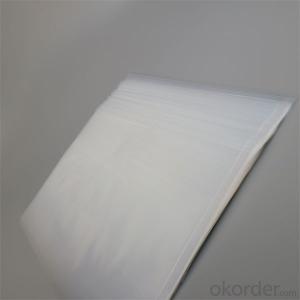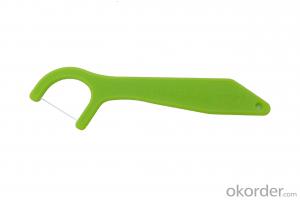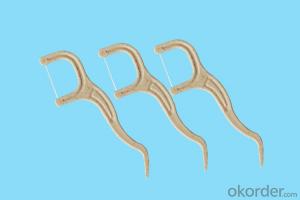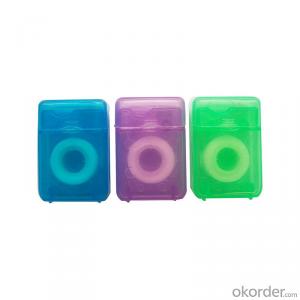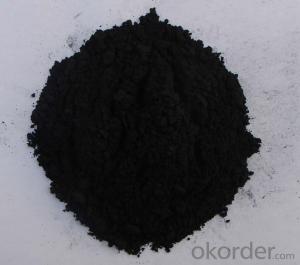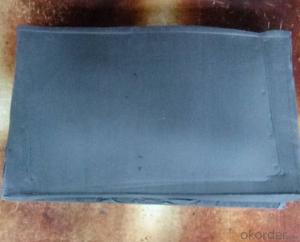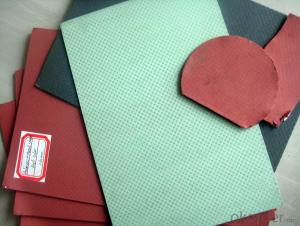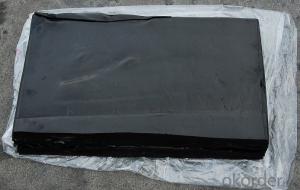Chloroprene Rubber Cold Resistant, The Glass Transition Temperature Of Minus 72 Degrees
- Loading Port:
- Qingdao
- Payment Terms:
- TT OR LC
- Min Order Qty:
- 25 m.t.
- Supply Capability:
- 50000 m.t./month
OKorder Service Pledge
OKorder Financial Service
You Might Also Like
1. Description of Rubber:
Natural rubber is a kind of polyisoprene as the main component of natural high molecular compound, its composition in 91% ~ 94% is the rubber hydrocarbon(polyisoprene), the protein, fatty acid, carbohydrate, ash and other non rubber substance. Natural rubber is the most widely used general rubber..
2. Main features of Oil Seal:
1) high elasticity, according to the formula, the elastic can reach 80% of the maximum.
2) high elongation, the maximum can reach more than 1000%.
3) the elastic modulus and the shear modulus is low, than some rigid substances such as iron and steel and other low much.
4) cold resistant, the glass transition temperature of minus 72 degrees..
3. Rubber Images:

4. Rubber Application:
Rubber elasticity, good insulation, impermeability and plasticity characteristics of natural rubber, and through the mix after appropriate treatment also has oil resistance, acid and alkali resistance, heat resistance, cold resistance, pressure resistance, wear resistance and other properties, therefore, has the widespread use, mainly used for automobile, machinery, industrial etc. industry as a shock, sealing parts.
5. FAQ
We have organized several common questions for our clients,may help you sincerely:
①How about your company?
A world class manufacturer & supplier of Rubber is one of the large scale professional investment casting production bases in China,consisting of both casting foundry forging and machining factory. Annually more than 8000 tons Precision casting and forging parts are exported to markets in Europe,America and Japan. OEM casting and forging service available according to customer’s requirement.
②How to guarantee the quality of the products?
We have established the international advanced quality management system every link from raw material to final product we have strict quality test; We resolutely put an end to unqualified products flowing into the market. At the same time, we will provide necessary follow-up service assurance.
- Q:What are the seal materials? What's the difference between silicone seals, EVA seals and rubber seals? Seek reply
- Only silicone soft, rubber harder point, EVA seal is another kind, usually used to make toys, seals, these seals material is a bit outdated
- Q:The difference between rubber and polyurethane
- Rubber and polyurethane are two different materials. The advantages of its use are slightly different, so to speak, rubber is the most widely used.
- Q:What are the materials for the optical fiber sheath?
- PP, SBS, PVC and other thermoplastic elastomer made most, of course, high-grade also useful in ethylene propylene or silica gel manufacturing, that is, high cost!! Specific process production can be linked
- Q:Yoga mat material NBR, per which good?
- Per yoga mats haven't been heard. Are you talking about the TPE material? If it is TPE material, it is better than NBR quality, lightweight, environmental protection, small odor, anti slip and resilience are better than NBR.
- Q:Is vulcanized rubber thermoplastic or thermosetting?
- Thermoplastic rubber can be divided into the following 3 basic groups:1. Block copolymers of styrene (SBS, SEBS and SIS);2 thermoplastic / thermoset rubber mixtures (TPV, TPO, pvc/ nitrile) - thermosetting rubber phase can be completely cured, partially cured or simple mechanical mixing;3, and multi segment copolymers, including mechanical mixtures (polyurethane / rubber mixtures, nylon / rubber mixtures, polyester / rubber blends)Natural and synthetic thermosetting rubber, including EPDM, SBR, NBR, and chloroprene rubberSo, vulcanized rubber is usually thermoplastic
- Q:Rubber wood, ash, pine. What is the best quality of the furniture made of the three materials?
- Rubber wood, native to Brazil, Malaysia, Thailand, etc.. Domestic in Yunnan, Hainan and coastal areas, is the raw material of latex. Rubber wood is light brown, with irregular small rays, rings are obvious, the circle is deep ribbon, tube hole is very little. Woodiness structure is coarse and even. The texture is oblique and the wood is stiffer. Advantages: smooth noodles, easy to glue, paint, coating performance is good.Disadvantages: rubber wood has peculiar smell, because it contains more sugar, it can change color, rot and moth eaten. Not easy to dry, not wear-resistant, easy to crack, easy to bend deformation, wood processing easy, and plate processing easy deformation.
- Q:What rubber material is used for explosion proof flame retardant aprons?
- Caution: not suitable for use in chemicals such as strong acids, nitro hydrocarbons, esters, chloroform, and ketones. Generally, the temperature range is -55 degrees C, ~120 degrees centigrade.
- Q:For rubber materials. What are the commonly used anti-wear additives?
- The anti-wear additives for different products are different
- Q:What's the difference between sole material MD and TPR?
- TPR: thermoplastic rubber (Thermoplastic Rubber), is a kind of rubber and thermoplastic properties of materials, rubber performance and processing and recycling by thermoplastic plastics, can use ordinary plastic forming machine with injection molding, extrusion molding, blow molding type made of rubber products.
- Q:Which kind of rubber material has the best corrosion resistance?
- Excellent oil resistance and chemical resistance. Weatherability and ozone resistance are second only to that of ethylene propylene rubber and butyl rubber. The heat resistance and the nitrile rubber, the decomposition temperature of 230 ~ 260 DEG C, short-term resistance at 120 to 150 DEG C, used for a long time at 80 to 100 DEG C, with a certain flame retardancy. Oil resistance second only to nbr. Good resistance to inorganic acids and alkalis. Cold resistance is slightly worse, electrical insulation is poor. Rubber poor storage stability, will have a "sulfur" phenomenon, Mooney viscosity increased, hard rubber. Foreign brands are: AD 1, 30 (USA), A-90 (Japan), 320 (Germany), and MA40S (France).
1. Manufacturer Overview |
|
|---|---|
| Location | |
| Year Established | |
| Annual Output Value | |
| Main Markets | |
| Company Certifications | |
2. Manufacturer Certificates |
|
|---|---|
| a) Certification Name | |
| Range | |
| Reference | |
| Validity Period | |
3. Manufacturer Capability |
|
|---|---|
| a)Trade Capacity | |
| Nearest Port | |
| Export Percentage | |
| No.of Employees in Trade Department | |
| Language Spoken: | |
| b)Factory Information | |
| Factory Size: | |
| No. of Production Lines | |
| Contract Manufacturing | |
| Product Price Range | |
Send your message to us
Chloroprene Rubber Cold Resistant, The Glass Transition Temperature Of Minus 72 Degrees
- Loading Port:
- Qingdao
- Payment Terms:
- TT OR LC
- Min Order Qty:
- 25 m.t.
- Supply Capability:
- 50000 m.t./month
OKorder Service Pledge
OKorder Financial Service
Similar products
New products
Hot products
